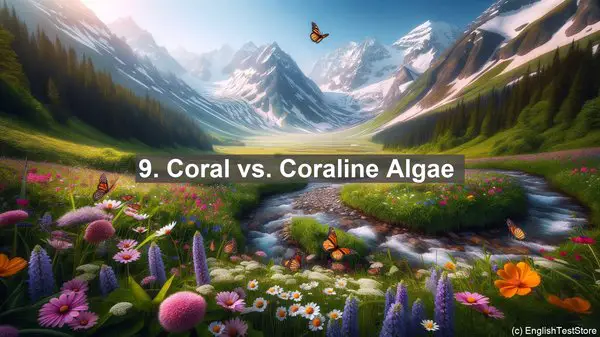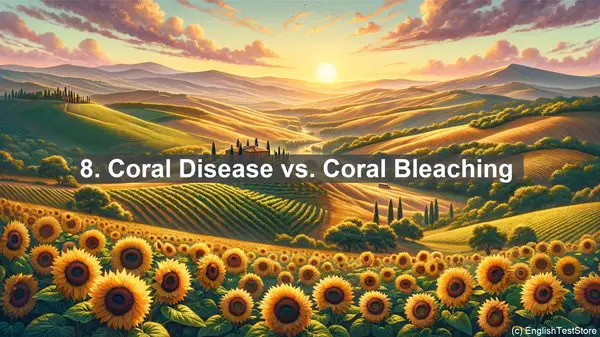Introduction: The Importance of Coral Ecology
Today, we dive into the fascinating world of coral ecology. Coral reefs are not only breathtakingly beautiful but also vital for our planet’s health. They provide habitats for countless marine species and protect coastlines from erosion. To truly comprehend coral ecosystems, we must first grasp the precise meanings of certain words.
1. Coral vs. Coral Polyp
Often used interchangeably, ‘coral’ refers to the entire colony, while ‘coral polyp’ represents the individual organism. Picture the coral colony as a bustling city, with each polyp as a tiny resident, working together for the colony’s survival.

2. Bleaching vs. Death
When corals experience stress, they expel the colorful algae living within them, resulting in ‘bleaching.’ While bleached corals are not dead, they’re highly vulnerable. If the stress persists, it can lead to their demise. Therefore, bleaching is a warning sign that immediate action is required.
3. Coral Reef vs. Coral Atoll
Both terms refer to coral formations, but there’s a significant difference. A ‘coral reef’ is a structure formed by corals, while a ‘coral atoll’ is a ring-shaped reef surrounding a lagoon. Atolls often form around sinking volcanic islands, creating stunning circular formations.
4. Zooxanthellae vs. Phytoplankton
Zooxanthellae are the algae that live symbiotically within coral polyps. They provide food through photosynthesis. On the other hand, phytoplankton are microscopic plants drifting in the ocean. While both are essential for marine ecosystems, zooxanthellae have a more direct relationship with corals.
5. Coral Spawning vs. Coral Larvae
Coral spawning is the synchronized release of eggs and sperm by corals, resulting in the production of coral larvae. These larvae float in the water column, often traveling long distances before settling on a suitable substrate to start a new colony. It’s a remarkable event, crucial for coral reproduction.
6. Fringing Reef vs. Barrier Reef
Fringing reefs are directly attached to the coastline, while barrier reefs are separated by a lagoon. Barrier reefs are often larger and farther from the shore. Both types provide essential habitats, but barrier reefs offer additional protection to the coastline.

7. Coral Predators: Crown-of-Thorns vs. Parrotfish
Crown-of-thorns starfish are voracious coral predators, capable of causing significant damage to reefs. In contrast, parrotfish, although they feed on corals, play a crucial role in maintaining reef health. Their grazing helps control algae, preventing it from overgrowing and suffocating corals.
8. Coral Disease vs. Coral Bleaching
While coral bleaching is primarily caused by environmental stress, coral diseases are often the result of pathogens or infections. Both can have devastating effects on coral populations, further emphasizing the need for conservation efforts.
9. Coral vs. Coraline Algae
Coral is an animal, while coraline algae are plants. Coraline algae often form colorful encrustations on coral surfaces, adding to the reef’s vibrant tapestry. They also play a role in reef building, secreting calcium carbonate, which contributes to the reef’s structure.
10. Coral Reef Restoration vs. Rehabilitation
When a reef is damaged, restoration involves active measures to rebuild it, such as transplanting corals. Rehabilitation, on the other hand, focuses on improving the reef’s health and resilience, often through reducing stressors. Both approaches are vital for ensuring the long-term survival of coral ecosystems.
